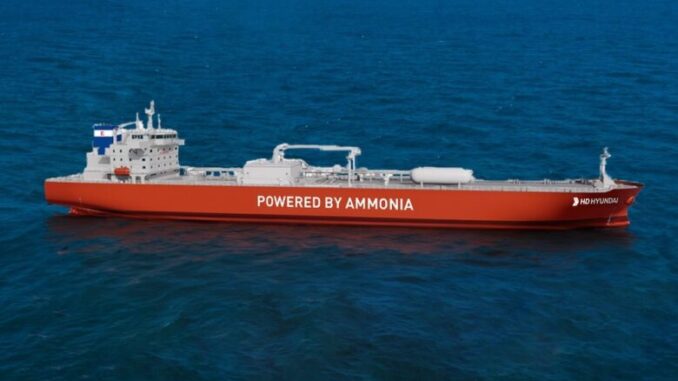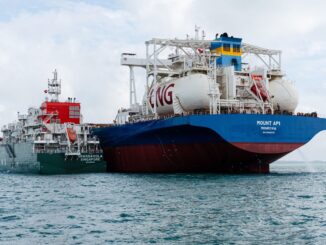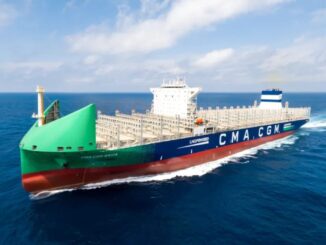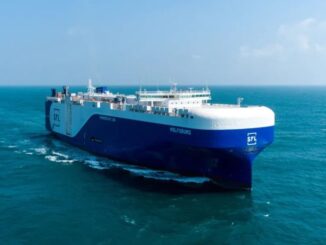
Decarbonising shipping could double the cost of transporting goods by containers, according to a new report from class society DNV.
Ahead of next week’s SMM, the world’s largest shipping exhibition, DNV has released its latest Maritime Forecast to 2050, a 72-page publication now in its eighth edition.
The in-depth report provides an updated outlook on regulations, drivers, technologies and fuels needed for maritime decarbonisation, including four scenarios exploring conditions that could accelerate the adoption of specific fuels and technologies by 2050. The study emphasises that regardless of which direction the industry’s decarbonisation journey takes, it will come at a significant cost. The four simulated scenarios project these cost increases per transport work; with estimates ranging from 69-75% for bulk carriers, 70-86% for tankers, and 91-112% for container vessels.
“Our latest analyses show that decarbonising shipping could double the cost of transporting goods by containers”, said Eirik Ovrum, lead author of Maritime Forecast to 2050. “Ultimately, the rising costs of seaborne transport will need to be passed down the value chain and the market is already seeing trends towards shifting these costs to end-users.”
The whole shipping supply chain has been debating at events around the world who will pay for the costs of decarbonisation.
At TPM, container shipping’s top event, in Long Beach last year, Jeremy Nixon, the CEO of Japanese liner Ocean Network Express (ONE), told delegates the cost of fuel for containerships stood at about $1,000 per feu.
“That’s roughly what the cost component is of using carbon fuel. These new fuels are going to be two or three times more expensive. So, potentially $2,000-3,000 will be the future fuel cost of moving a 40-foot container,” Nixon said.
At this year’s Geneva Dry, the world’s top commodities shipping event, Eman Abdalla, the global operations director at agribusiness juggernaut Cargill, quizzed on the who will pay topic, told delegates: “I will say collectively, we will all be paying, but we all know that the cost will cascade throughout the value chain to the end consumer,” she said, adding: “If you look at Nike shoes, for example, if a pair of Nike’s is transported using green fuels, the additional cost is going to be $0.46. For a pair of shoes, I don’t think anybody is going to think twice about that added premium. But ultimately in the end it’s a collective responsibility.”
A nearer date that shipping needs to watch out for is 2030 – a year the International Maritime Organization (IMO) has set to slash shipping emissions by 20%, which will not be possible by chasing green fuels alone, DNV has warned.
To reach IMO’s 2030 decarbonisation goals shipping will need between 7m and 48m tons of carbon-neutral fuels, DNV is forecasting. However, with the global cross-sector production of carbon-neutral fuels expected to reach only between 44m and 63m tons by 2030, it will be near impossible for shipping to secure its required share, DNV warned yesterday.
This February, the European Commission published its proposal for a 2040 climate target laying out the pathway to make the European Union climate-neutral by 2050 with shipping shown its green pathway, and a noticeable rapprochement with the industry’s global regulator, the International Maritime Organization (IMO).
European shipowners welcomed the commitment of the commission to address “barriers to the deployment of low- and zero-emissions fuels including e-fuels and advanced biofuels” in shipping and to give the sector “priority access to these fuels over sectors that have access to other decarbonisation solutions”.
The commission acknowledged that the increased costs of sustainable fuels is a key factor for the competitiveness of shipping and has committed to consider regulatory measures to foster their production.
“It’s the first time we see such a strong commitment to give shipping priority access to low- and zero-emission fuels such as advanced biofuels and e-fuels. The price gap is immense, as the cost of sustainable fuels can be four times higher compared to fuels currently used in shipping,” commented Sotiris Raptis, secretary-general of the European Community Shipowners’ Associations (ECSA).
Unveiling the Maritime Forecast to 2050 yesterday, Knut Ørbeck-Nilssen, DNV Maritime CEO, said: “While we are currently witnessing a slowdown of decarbonisation in shipping, we are entering an era of unprecedented technological exploration that will drive progress forward. With carbon-neutral fuels in short supply, smart decision-making and strategic investments today are crucial to lay the foundations for future emissions reductions. Prioritising energy efficiency, leveraging technological solutions, and embracing digitalisation are key steps towards reducing the extra cost burden and achieving our decarbonisation goals.”
To access the free DNV report in full, click here.

Take the Survey at https://survey.energynewsbeat.com/






